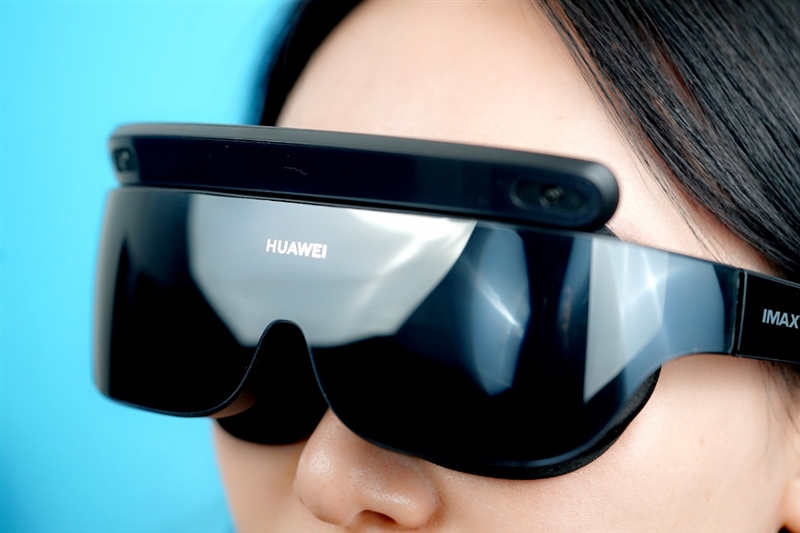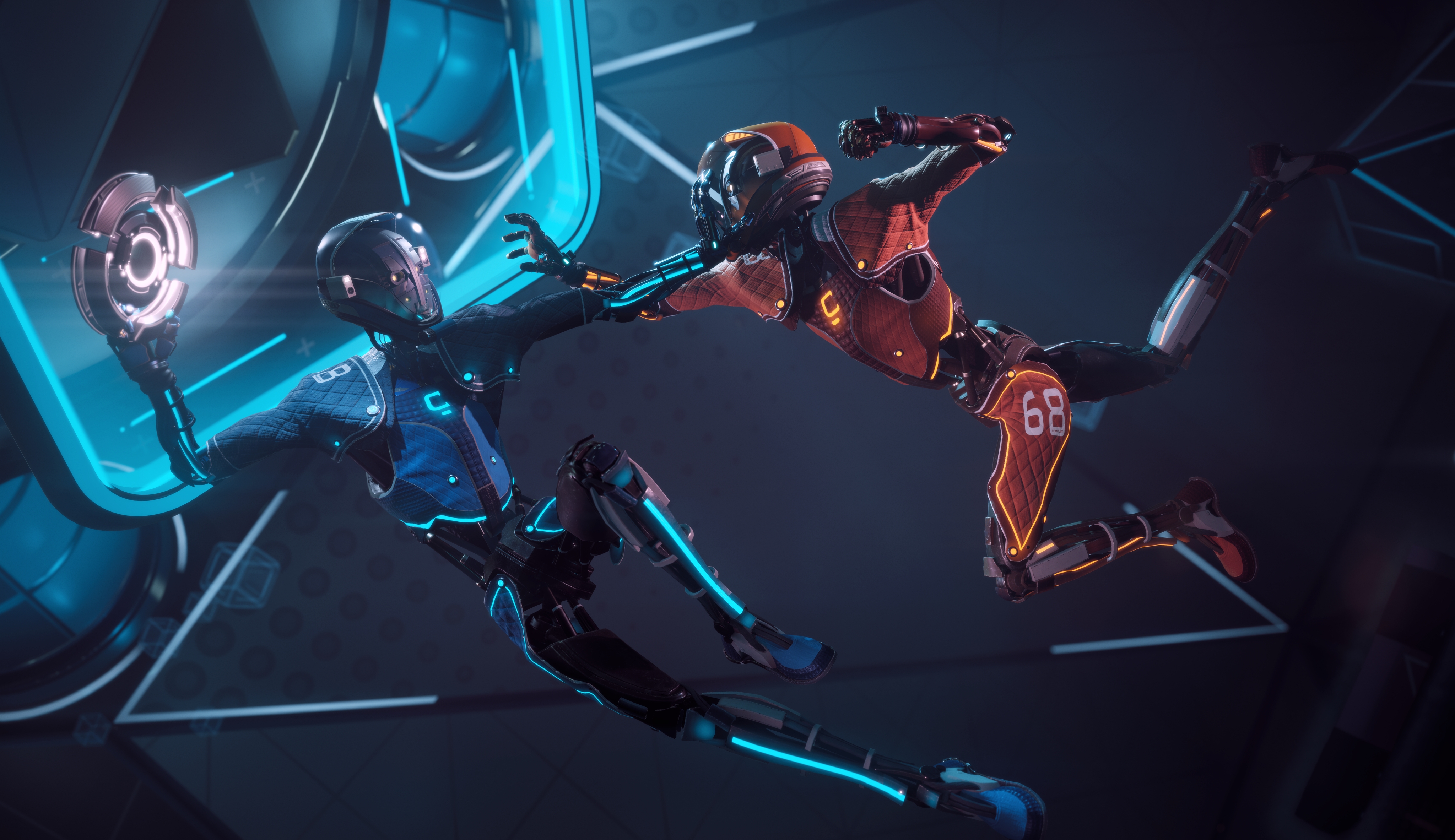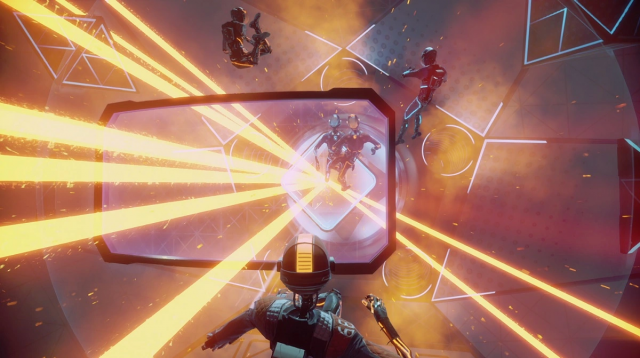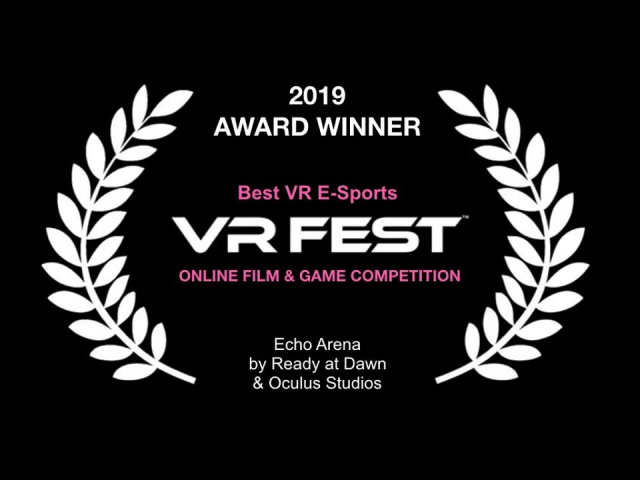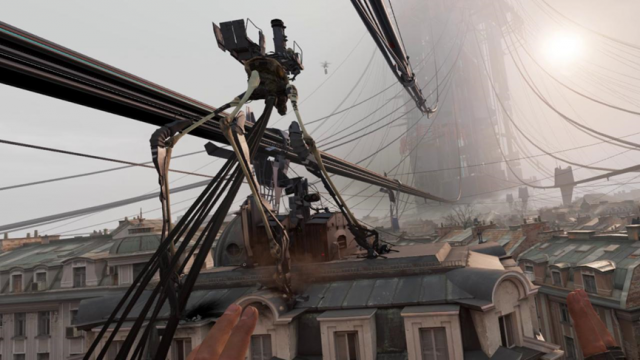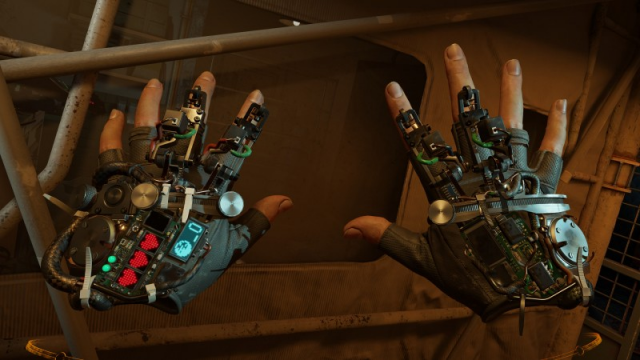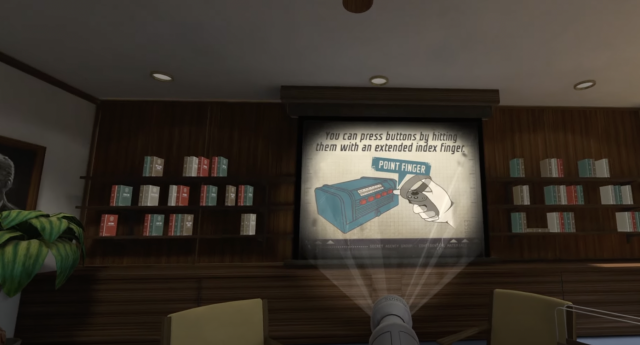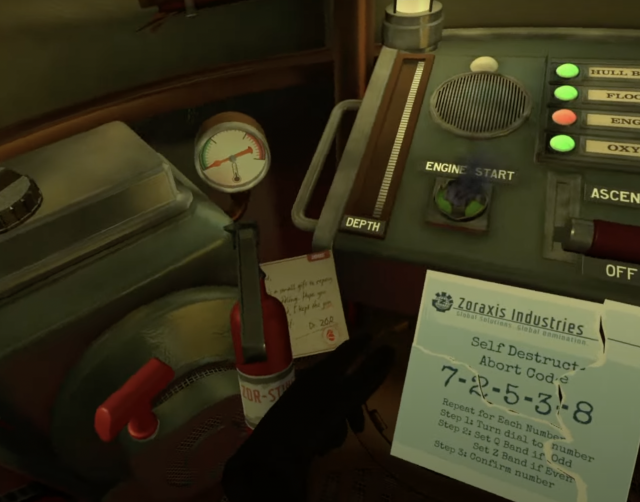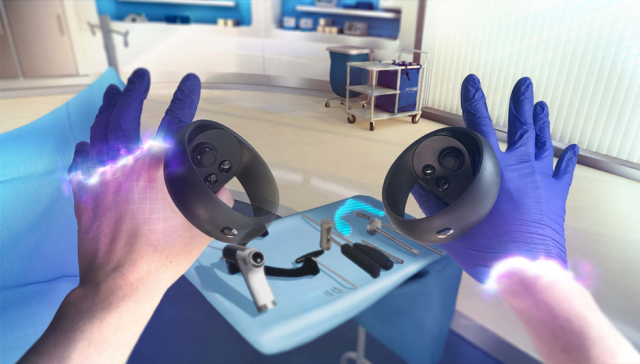If there is a game that allows you to move freely, all the items in it have real physical effects, NPCs also have a ragdoll system, and then enables you to have a pair of flexible hands, what kind of experience would that be?
What is it?
Boneworks is a 2019 First-person Shooter VR game developed and published by Stress Level Zero. The game’s design is entirely physics-based, with the player controlling an entire virtual body that responds not only to the player’s real-world input, but also to obstacles in the game world. In Boneworks, players take on the role of Arthur Ford, a rogue cybersecurity director who escapes to an unfinished simulated universe, battling surreal buildings and occult settings with a variety of experimental physics-based weapons.
The game uses a physics engine that is very close to the real experience. In the game, almost all items are interactive, such as water cups, trash cans, hammers, balls, gun. You can use all the items you can pick up in the game world Advance bravely, fight the enemy, and explore the unknown next corner.
Why is it engaging?
The main gameplay is to experience realistic physics interactions in semi-open levels and to combine these physics effects to unlock the puzzles in the levels. In this game, there are no traditional game guidelines or clear tasks, everything can be done according to the player’s choice to pass the route, the player can find their own way to play.
Boneworks has 3 modes, story, arena and sandbox mode. Story mode is more like a newbie tutorial, but only in the story mode can players get props to unlock and enter the other modes. Directly skipping the story mode in not possible. Wearing VR game equipment to begin with, players will be in an open museum available to visit, at each exhibition to experience the weapons props, as well as through the props to interact with the environment.
When the player is familiar with the mechanism will produce a refreshing, realistic experience. Players can freely move to pick up weapons and props, and when the bullets run out, players are also free to play, directly on the whack are not a problem. This freedom is very high, but also very strong simulation of realistic physical action gameplay greatly home immersion experience in VR gaming equipment.
What features are well done?
- Great physics
Boneworks is the first VR game to use the idea of providing players with a variety of objects, each with their own unique weight and weight model, and then using them as components to solve single-player puzzles and battles.
Before Boneworks, while most VR games emphasized interaction, that interaction was “shallow”. Players could only interact with specific, scripted objects, and mold penetration was very prevalent. It wasn’t until late 2018 that a new batch of VR shooter games added the collision of the gun itself and the scene to the code. But Boneworks has gone a step further—or a giant leap—in physics. Almost all objects in the game can be interacted with, and players can also interact with other objects through the object in their hands. A more vivid expression is that it hits people with a frying pan. And in this interaction, the gravity of the object itself and various accelerations are also written into the game code as one of the parameters, that is to say, there will be objects that you can’t lift with one hand but can be lifted with both hands. There will be glass that won’t break when tapped lightly but can be smashed when tapped hard.
- Hidden Sandbox mode and Arena mode
One of the coolest unlocks is the sandbox mode, which is neatly hidden behind a fake wall on the second floor of the campaign. It makes good use of whatever you collect during the campaign and puts it into giant blue recycling bins, allowing you to build any crazy death traps you can imagine. It feels a little simple at first, but once you’ve filled your arsenal with toys, you can spend hours tinkering with it.
The infinitely playable arena mode is just as fun, offering tons of clever new customizable challenges to beat in every way. Its three modes–Judgment, Challenge, and Survival–are enjoyable in their own way, providing reasons to return to Boneworks time and time again. They also introduce some interesting mechanics that weren’t explored in the main campaign, like the balloon gun, which lets you lift enemies, objects, and even yourself into the air. Some modes are particularly tough, including a trial that forces you to fight wave after wave of minotaurs without any health regeneration. If you beat it, there’s even an arcade-style scoring system you can use to prove to your friends and family that you’re John Wick.
- Great gameplay
The game provides a very good physics engine, which gives players a strong sense of substitution. But this sense of immersion refers not only to the plot but also to the physical world of the game. The game does not introduce too many background settings. In the game, players must follow the limited prompts and the feeling of the game to keep advancing and exploring. However, these are not important. The unique style of the game, the operating experience of VR, and the physical interaction close to the real world is what players feel the most in the game. From the DAU data of VR content on the Steam platform above, it can be seen that the types of games generally accepted and loved by VR gamers are action, combat, shooting, and adventure. These elements are all reflected in Boneworks. Climbing, jumping, attacking enemies with bare hands or using guns, and groping forward in unknown environments, these elements make Bonework” easy to be accepted by players.
- User-friendly
In the game, there will be 2 hours of user guide levels. In the teaching stage, players can learn and experience the grabbing and discarding of objects, the running, jumping, climbing and other operations of characters, as well as the use and selection of various weapons, etc. Each part provides a demonstration of the operation, and all items or scenes are included for practice, so even players who are new to VR games can quickly become familiar with basic operations.
Between the teaching scenes, there are text or direction guidance signs telling the player how to operate, and the player will feel very relaxed at this stage with the guidance. Excellent physics engine and creative scenes will bring players one surprise after another.
What features can be improved and how?
- Motion sickness
In Boneworks, players can not only accelerate the run and jump, but even get down or pad toe. However, too much freedom of movement has also become the threshold for many people. Brain and visual mismatch led to the sense of dizziness so that many players in the beginning do not adapt to this way of playing.
- Immersive experience
The physics-oriented gameplay of “Boneworks” is a double-edged sword. When everything is working properly, games can be quite magical experiences and provide a rich sense of immersion that few other games achieve. This can lead to nightmarish moments of frustration when things start to go wrong.
In Boneworks, the acceleration and gravity of the object are taken into account, that is to say, the damage I can cause by swinging the brick vigorously and gently swinging the brick is not consistent. However, in the game, it often happens that I swing the brick vigorously but there is still no damage to the object. The reason for this situation is very complicated: it may be the result of the cognitive mechanism of the human brain, the acceleration calculation formula of the game, etc. Since there is an object in the VR screen you see, so when you swing the brick, your subconscious mind will also think that there is an object here, so the force you use to swing the brick will actually start to weaken when your brain thinks that it has “touched” the object. What’s more, in fact, you don’t have a brick in your hand. Even if the handle itself has a little weight, it still can’t compare with most objects in the game. That is to say, many times even if I really want to “vigorously” swing the virtual object in my hand, the almost negligible sense of weight from the handle will still prevent my brain from really “strengthening miracles”.
Generally speaking, although the physical effects and interaction of the game are very good, in fact, no player can successfully “deceive themselves”. Players will be surprised by the performance of the game in terms of physical effects. But in the same time, the torment of being separated from the game world may not be resolved until the era of intubation. Boneworks has revealed the existence of this problem to most players who have not thought about intubation in advance.
Conclusion
Overall, Boneworks is a very worthwhile VR game. With a physics engine close to the real world, a futuristic graphic style, and classic gameplay of adventure and combat, whether you have VR game experience or not, you can get a variety of surprises in this game.
Reference
https://en.wikipedia.org/wiki/Boneworks
https://www.oculus.com/experiences/rift/2385436581584047/
https://www.ign.com/articles/2019/12/15/boneworks-review
https://arstechnica.com/gaming/2019/12/boneworks-review-an-absolute-vr-mess-yet-somehow-momentous/


